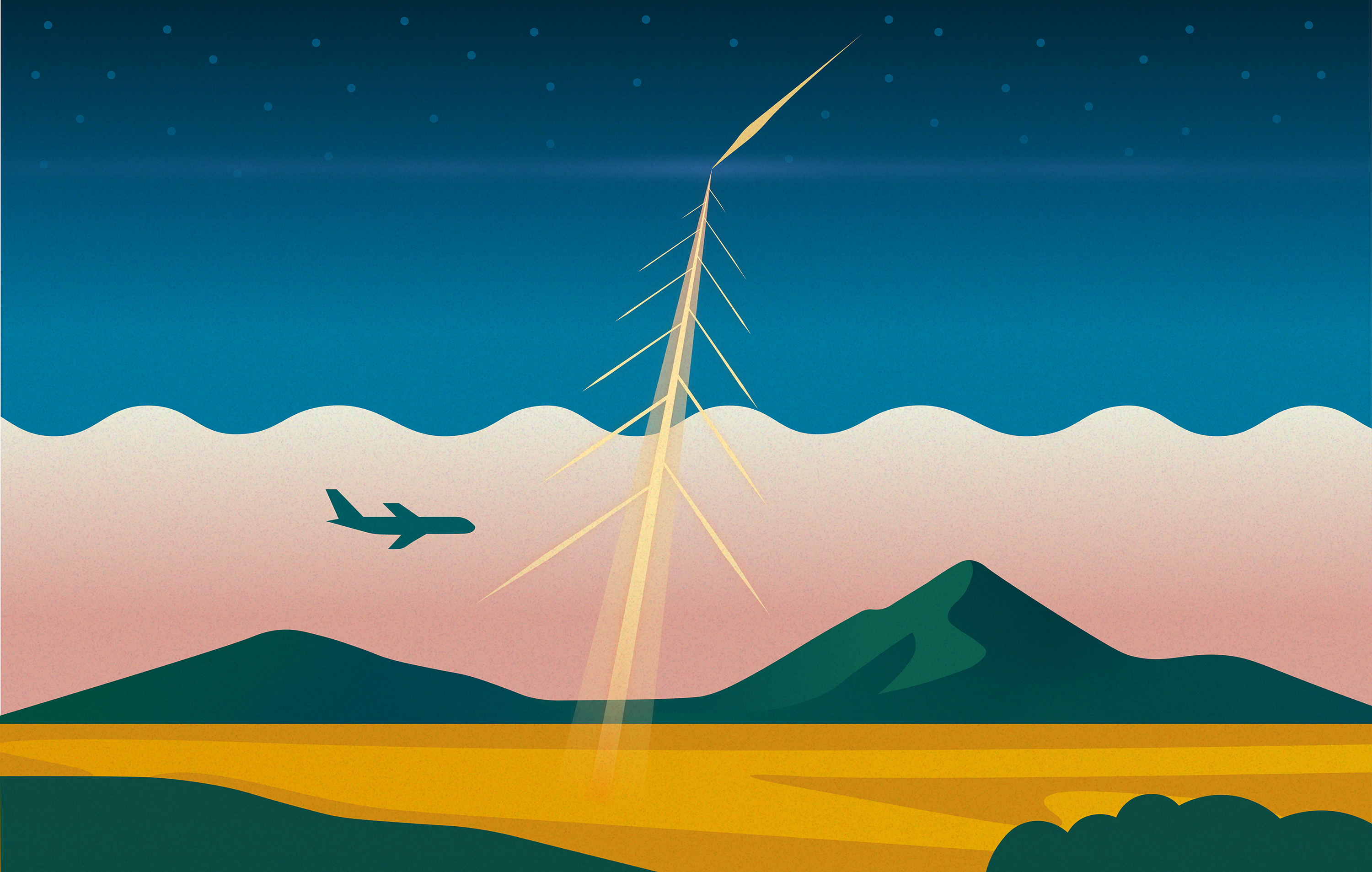Diverting Doomsday
Protecting Earth from cataclysmic comets might require nuclear rockets
- Eleanor Hutterer, Editor

In July of 1994, comet Shoemaker-Levy 9 crashed into Jupiter. Astronomers watched in awe as dozens of comet fragments bombarded the giant planet’s southern hemisphere and debris clouds billowed to 12,000 kilometers (km) across, roughly the same diameter as the earth. It was the first time anyone had witnessed two major celestial bodies collide within our solar system, leading stargazers around the world to the same apprehension: what if it had been Earth?
The drama on Jupiter was a wake-up call, underscoring the reality that demise-by-comet isn’t just for dinosaurs. Humanity has had 22 years since then to put into place a planetary defense system capable of deterring a doomsday comet. And yet, today, no such system exists.
Roughly every million years, an object measuring at least 1 km across hits the earth. And roughly every 100 million years, an object measuring at least 10 km across hits it; one of these is thought to have caused the extermination of the dinosaurs 66 million years ago. Comets on orbits of more than 200 years are called long-period comets and are believed to come from the Oort cloud, a spherical region full of icy objects surrounding our solar system. These objects occasionally get dislodged from their orbit within the Oort cloud and begin to fall toward the inner solar system. We earthlings call them comets when they get close enough to the sun to begin to vaporize; the boiled-off surface material is pushed outward by the solar wind, creating their characteristic tails.

Comets, especially long-period comets, are more worrisome than asteroids in terms of planetary defense for several reasons. First, they are the fastest objects in our solar system, which doesn’t leave much time for defensive measures—18 months at most from the time of a comet’s discovery. Second, their orbits are so long they usually come around only once on the timescale of our civilization, making them impossible to anticipate based on a prior appearance. Third, they tend to be quite large, ranging 1–40 km in diameter. If a long-period comet just 10 km across were to hit Earth, it would deliver over a billion times the combined energy of the nuclear bombs that devastated Hiroshima and Nagasaki.
“It’s a great cosmic billiards game out there,” says Los Alamos plasma physicist Glen Wurden, “and there is a comet somewhere that is going to hit us. We just don’t know when—it could be in millions of years or it could be tomorrow.” In his plasma research lab, Wurden, who is also an avid backyard astronomer, chucks tiny pieces of ice into plasmas, making what amount to very, very small comets. This got him thinking about very, very big comets, and he came up with a wild idea.
There isn’t much to be done, defense-wise, about a comet’s size or orbit, but Wurden’s idea is to change its trajectory. It would require a rocket with enough speed to close the distance between Earth and the comet quickly, typically in about half the time until impact. No such rocket exists, but Wurden believes it could, if scientists put their minds and skills to the task.
It would have to be nuclear. Only a rocket propelled by thermonuclear fusion would have the necessary combination of power and speed to get there in time, and only a thermonuclear warhead would deliver the bump needed to change the colossal comet’s trajectory. This is convenient and inconvenient at once. It’s convenient because some of the technology already exists, and scientists, especially Los Alamos scientists, have the nuclear skills and technical know-how to pursue such a rocket. It’s inconvenient, however, because there are two international treaties that would require amending: one to allow nuclear devices in temporary orbit around Earth and another to allow detonation of nuclear explosives in space. Both of these are presently prohibited.
Should the legalities get resolved, the comet interceptor would accelerate continuously as the distance to the comet narrows then detonate the explosive when the rocket is about 1 km away. The explosion wouldn’t destroy the comet, but the radiation from the explosion would burn and boil material off the side of the comet, changing its mass and momentum. In a scenario where the comet is intercepted six months before its predicted calamity, Wurden calculated that the explosion would need to exact a change of 10 meters per second to amount to a 150,000-km difference by the time the comet whizzes past Earth. That’s still a close shave, but humanity would behold a spectacle in the night sky rather than the end of days.
Wurden points out that although fusion rocket engines don’t technically exist yet, preliminary designs do exist, and Los Alamos National Laboratory, with its nuclear, space travel, engineering, and computational expertise, is ideally equipped for the tremendous task of answering this cometary call to arms.
But then there’s the price tag to consider. What is the insurance premium for a planet and all of its inhabitants? Wurden estimates an annual budget of $10 billion in perpetuity. That may seem high, but a single aircraft carrier runs in the neighborhood of $13 billion. Besides, we would split the check with other space-faring nations, so our cost would be just a fraction of the total.
“It’s not chicken little,” Wurden emphasizes. “A hit in the Pacific Ocean would create a tsunami that would cream every city on the Pacific Rim. Dust and debris would make short work of the rest of humanity. There are some catastrophes, like volcano eruptions, that we really can’t do anything about. This isn’t one of them.”
It’s a wild idea indeed, but perhaps it shouldn’t be.








